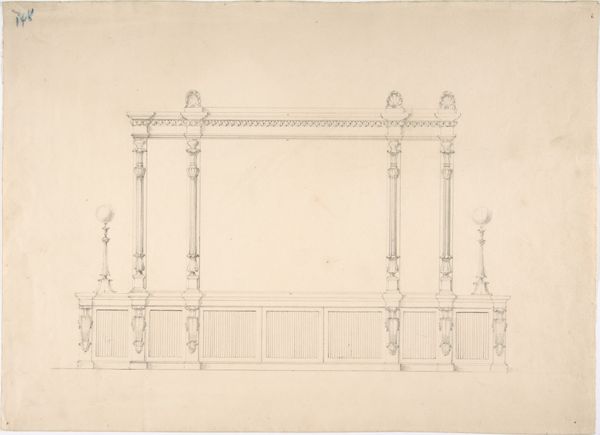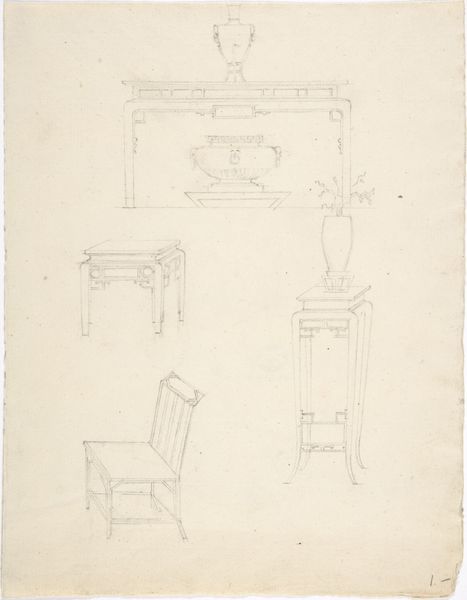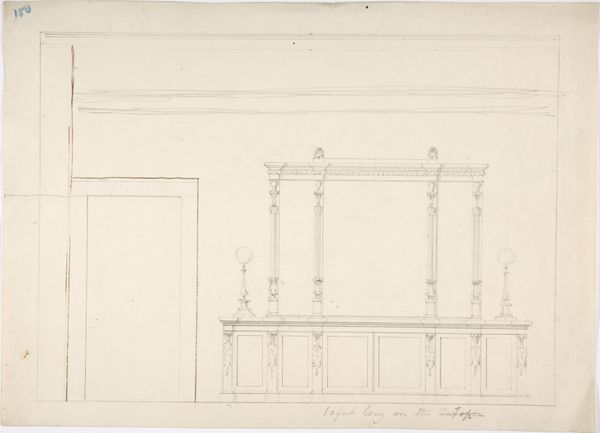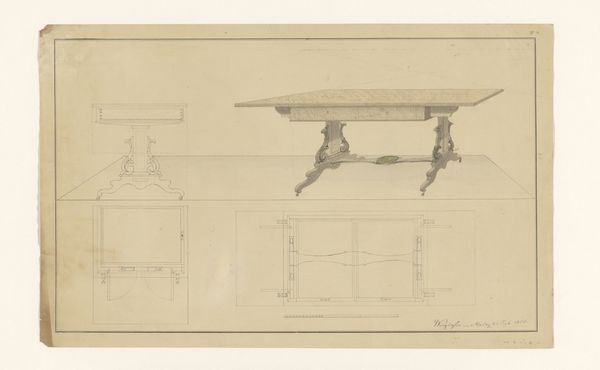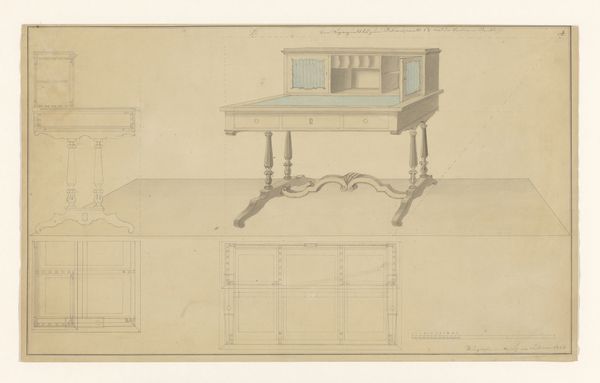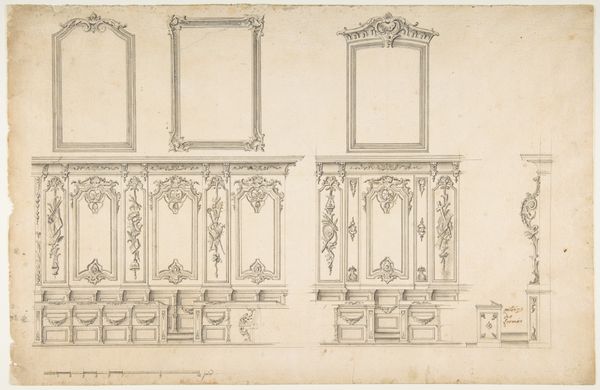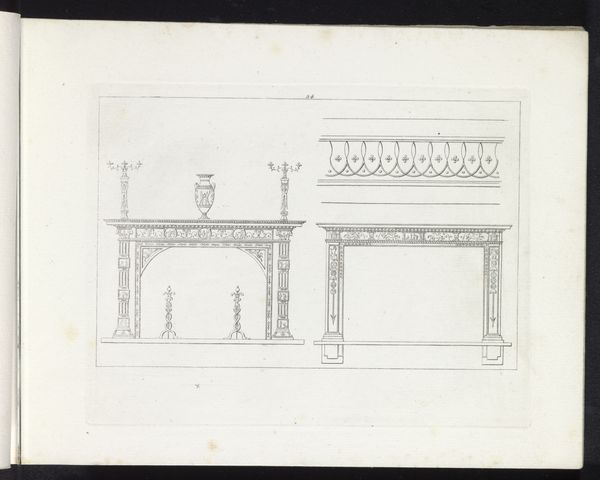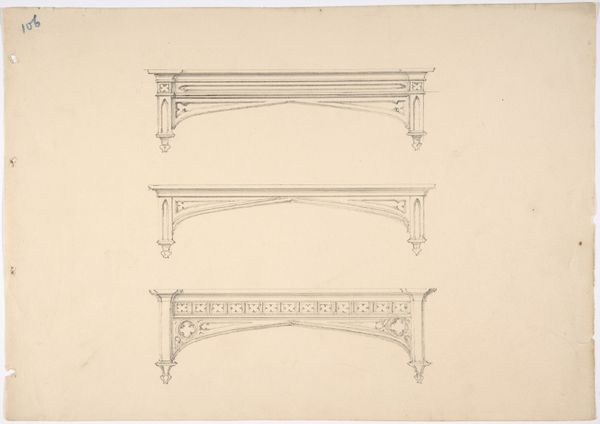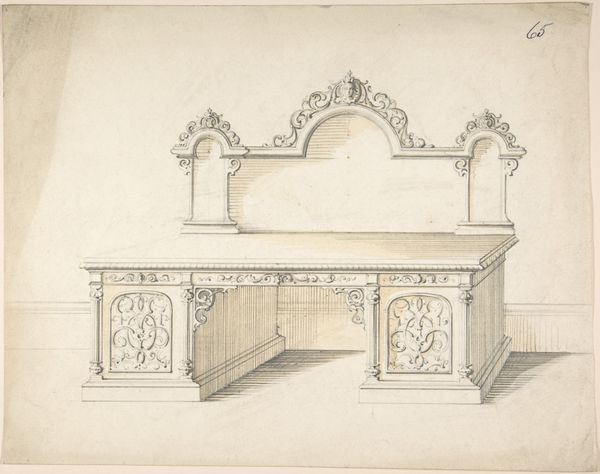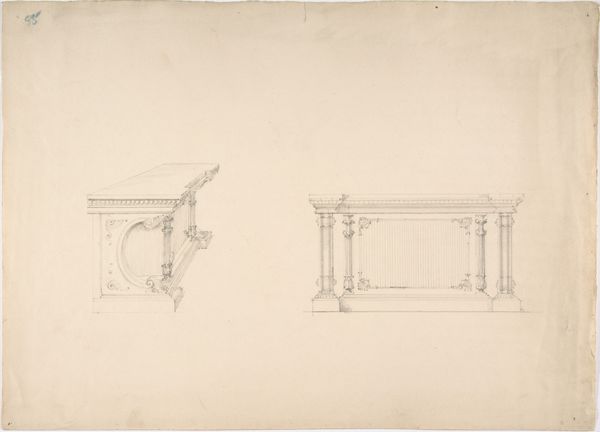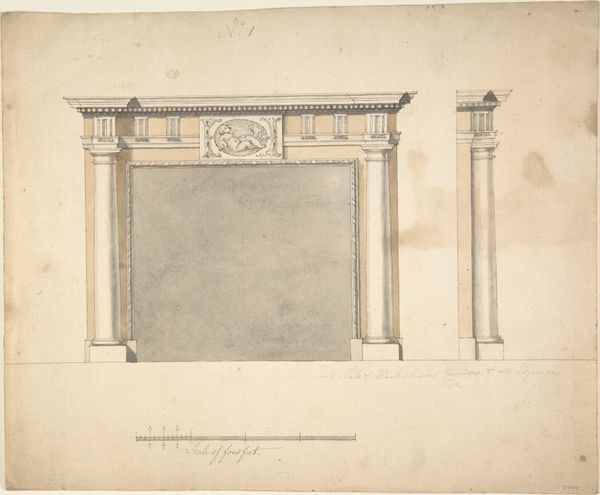
drawing, paper, pencil
#
drawing
#
art-nouveau
#
paper
#
form
#
geometric
#
pencil
#
line
#
decorative-art
Dimensions: height 481 mm, width 627 mm
Copyright: Rijks Museum: Open Domain
Curator: This delicate drawing offers us a glimpse into the world of decorative arts around 1900. The piece, titled "Ontwerp voor een tafel en een stoel," comes from the hand of E. Humbert. The artwork employs pencil and perhaps watercolor on paper, presenting an Art Nouveau design. Editor: It’s quite subdued, isn't it? The muted tones give it a rather melancholic feel. The composition also strikes me as rather technical. It has a blueprint-like precision but the sinuous lines attempt to soften its rigor. Curator: Absolutely. Humbert, situated within the Art Nouveau movement, aimed to synthesize art and life. The design's focus extended beyond mere functionality to incorporate beauty into everyday existence. The geometric forms intertwine with flowing, organic lines typical of the era, rejecting the stark industrial aesthetic then emerging in popular culture. Editor: That synthesis you mention brings to mind the era's broader social anxieties. Art Nouveau emerged, in part, as a direct response to the mechanization of production. Craft was idealized, perhaps romantically so, as a remedy to the alienation of modern labor. The politics of aesthetics are quite pronounced. Curator: Precisely! This drawing speaks volumes about class aspirations and consumer culture. The Art Nouveau style, though initially conceived with egalitarian ideals, eventually became a signifier of bourgeois taste and privilege. How interesting it is to view how form follows not only function, but also social stratification. Editor: Thinking about gender, too, Art Nouveau has always felt intrinsically tied to representations of femininity, though perhaps stereotypically so. It would be fascinating to investigate the roles and status of women designers like Humbert during this transformative period in social and design history. Curator: Your comment about gender reminds me to notice that it is so rare for designers of functional objects such as furniture to gain recognition and artistic appreciation. As with other craft activities, social recognition lags, and is gendered as well. Editor: Looking again, I wonder how different its impact would be in different material. In glass perhaps? Anyway, It certainly prompts reflection on the aspirations and contradictions inherent in design at the dawn of the 20th century. Curator: I agree. It serves as a beautiful testament to an era grappling with its identity in the face of modernity, leaving us much to contemplate.
Comments
No comments
Be the first to comment and join the conversation on the ultimate creative platform.

